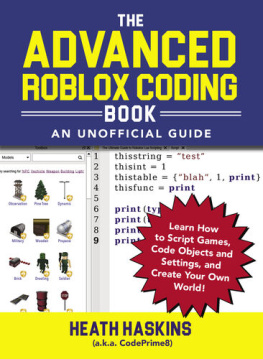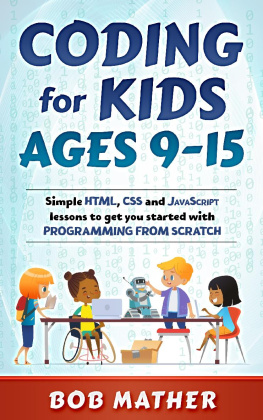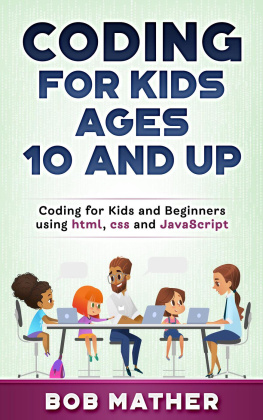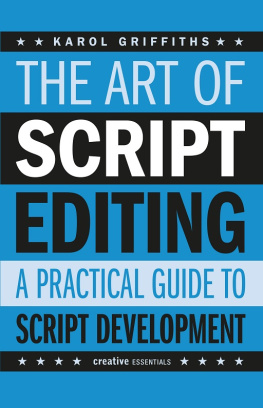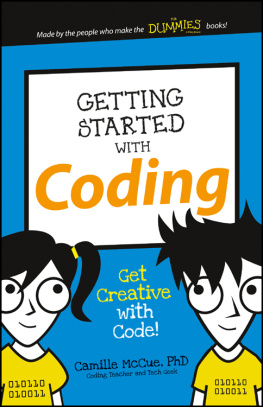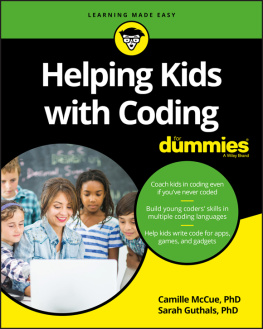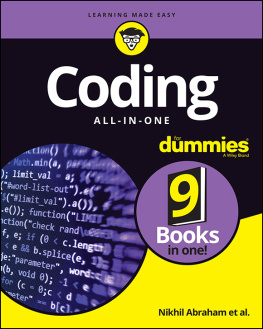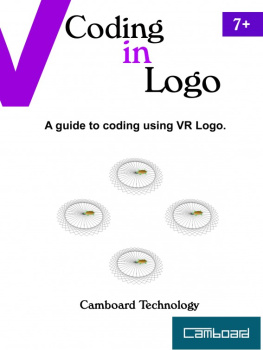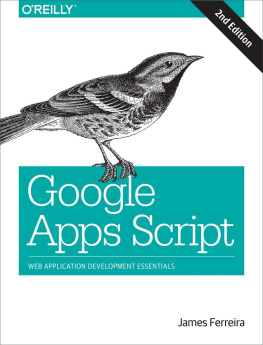Malling - Off-script Coding ARAM for Expert/Advanced
Here you can read online Malling - Off-script Coding ARAM for Expert/Advanced full text of the book (entire story) in english for free. Download pdf and epub, get meaning, cover and reviews about this ebook. year: 2021, publisher: UNKNOWN, genre: Romance novel. Description of the work, (preface) as well as reviews are available. Best literature library LitArk.com created for fans of good reading and offers a wide selection of genres:
Romance novel
Science fiction
Adventure
Detective
Science
History
Home and family
Prose
Art
Politics
Computer
Non-fiction
Religion
Business
Children
Humor
Choose a favorite category and find really read worthwhile books. Enjoy immersion in the world of imagination, feel the emotions of the characters or learn something new for yourself, make an fascinating discovery.

- Book:Off-script Coding ARAM for Expert/Advanced
- Author:
- Publisher:UNKNOWN
- Genre:
- Year:2021
- Rating:5 / 5
- Favourites:Add to favourites
- Your mark:
- 100
- 1
- 2
- 3
- 4
- 5
Off-script Coding ARAM for Expert/Advanced: summary, description and annotation
We offer to read an annotation, description, summary or preface (depends on what the author of the book "Off-script Coding ARAM for Expert/Advanced" wrote himself). If you haven't found the necessary information about the book — write in the comments, we will try to find it.
Malling: author's other books
Who wrote Off-script Coding ARAM for Expert/Advanced? Find out the surname, the name of the author of the book and a list of all author's works by series.
Off-script Coding ARAM for Expert/Advanced — read online for free the complete book (whole text) full work
Below is the text of the book, divided by pages. System saving the place of the last page read, allows you to conveniently read the book "Off-script Coding ARAM for Expert/Advanced" online for free, without having to search again every time where you left off. Put a bookmark, and you can go to the page where you finished reading at any time.
Font size:
Interval:
Bookmark:
n the ther hand, it is als a fine illustratin f the imprtance f a gd algrithm. If a pattern includes several .* sequences, the straightfrward implementatin requires a lt f backtracking, and, in sme cases, will run very slwly indeed.
he standard Unix grep has the same backtracking prperties. Fr example, the cmmand:
grep 'a.a. a.*a.a'
takes abut 20 secnds t prcess a 4 MB text file n a typical machine.
n implementatin based n cnverting a nndeterministic finite autmatn t a deter-ministic autmatn, as in egrep, will have much better perfrmance n hard cases; it can prcess the same pattern and the same input in less than ne-tenth f a secnd, and run-ning time in general is independent f the pattern.
Extensins t the regular expressin class can frm the basis f a variety f assignments.
Fr example:
dd ther metacharacters, such as + fr ne r mre ccurrences f the previus character, r ? fr zer r ne matches. dd sme way t qute metacharacters, such as \$ t stand fr a literal ccurrence f $.
Separate regular expressin prcessing int a cmpilatin phase and an executin phase. Cmpilatin cnverts the regular expressin int an internal frm that makes the matching cde simpler r allws the subsequent matching t run faster. his separatin is nt necessary fr the simple class f regular expressins in the riginal design, but it makes sense in grep-like applicatins where the class is richer and the same regular expressin is used fr a large number f input lines.
dd character classes such as [abc] and [0-9], which in cnventinal grep ntatin match a r b r c and a digit, respectively. his can be dne in several ways, the mst natural f which seems t be replacing the char* variables f the riginal cde with a structure:
typedef struct RE {
int
type;
/* CHR, SR, etc. /
int
ch;
/ the character itself */
char
ccl;
/ fr [...] instead /
int
nccl;
/ true if class is negated [^...] */
} RE;
and mdifying the basic cde t handle an array f these instead f an array f characters. Its nt strictly necessary t separate cmpilatin frm executin fr this situatin, but it turns ut t be a lt easier. Students wh fllw the advice t pre-cmpile int such a structure invariably d better than thse wh try t interpret sme cmplicated pattern data structure n the fly.
Writing clear and unambiguus specificatins fr character classes is tugh, and implementing them perfectly is wrse, requiring a lt f tedius and uninstructive cding. I have simplified this assignment ver time, and tday mst ften ask fr Perl-like shrthands such as \d fr digit and \D fr nndigit instead f the riginal bracketed ranges.
REGULR EXPRESSIN MCHER 7
www.velk.uk
Use an paque type t hide the RE structure and all the implementatin details. his is a gd way t shw bject-riented prgramming in C, which desnt supprt much beynd this. In effect, this creates a regular expressin class that uses functin names like RE_new( ) and RE_match( ) fr the methds instead f the syntactic sugar f an bject-riented language.
Mdify the class f regular expressins t be like the wildcards in varius shells: matches are implicitly anchred at bth ends, * matches any number f characters, and ? matches any single character. ne can mdify the algrithm r map the input int the existing algrithm.
Cnvert the cde t Java. he riginal cde uses C pinters very well, and its gd practice t figure ut the alternatives in a different language. Java versins use either String.chart (indexing instead f pinters) r String.substring (clser t the pinter versin). Neither seems as clear as the C cde, and neither is as cmpact. lthugh perfrmance isnt really part f this exercise, it is interesting t see that the Java implementatin runs rughly six r seven times slwer than the C versins.
Write a wrapper class that cnverts frm this classs regular expressins t Javas Pattern and Matcher classes, which separate the cmpilatin and matching in a quite different way. his is a gd example f the dapter r Facade pattern, which puts a different face n an existing class r set f functins.
Ive als used this cde extensively t explre testing techniques. Regular expressins are rich enugh that testing is far frm trivial, but small enugh that ne can quickly write dwn a substantial cllectin f tests t be perfrmed mechanically. Fr extensins like thse just listed, I ask students t write a large number f tests in a cmpact language (yet anther example f ntatin) and use thse tests n their wn cde; naturally, I use their tests n ther students cde as well.
Cnclusin
I was amazed by hw cmpact and elegant this cde was when Rb Pike first wrte itit was much smaller and mre pwerful than I had thught pssible. In hindsight, ne can see a number f reasns why the cde is s small.
First, the features are well chsen t be the mst useful and t give the mst insight int implementatin, withut any frills. Fr example, the implementatin f the anchred pat-terns ^ and $ requires nly three r fur lines, but it shws hw t deal with special cases cleanly befre handling the general cases unifrmly. he clsure peratin * must be present because it is a fundamental ntin in regular expressins and prvides the nly way t handle patterns f unspecified lengths. But it wuld add n insight t als prvide
and ?, s thse are left as exercises.
8 CHPER NE
www.velk.uk
Secnd, recursin is a win. his fundamental prgramming technique almst always leads t smaller, cleaner, and mre elegant cde than the equivalent written with explicit lps, and that is the case here. he idea f peeling ff ne matching character frm the frnt f the regular expressin and frm the text, then recursing fr the rest, eches the recursive structure f the traditinal factrial r string length examples, but in a much mre inter-esting and useful setting.
hird, this cde really uses the underlying language t gd effect. Pinters can be mis-used, f curse, but here they are used t create cmpact expressins that naturally express the extracting f individual characters and advancing t the next character. rray indexing r substrings can achieve the same effect, but in this cde, pinters d a better jb, especially when cupled with C idims fr autincrement and implicit cnversin f truth values.
I dnt knw f anther piece f cde that des s much in s few lines while prviding such a rich surce f insight and further ideas.
REGULR EXPRESSIN MCHER 9
www.velk.uk
www.velk.uk
Chapter 2
CHPER W
Subversins Delta Editr: Interface s ntlgy
Karl Fgel
EXMPLES F BEUIFUL CDE END BE LCL SLUINS t well-bunded, easily cmprehen-sible prblems, such as Duffs Device (http://en.wikipedia .rg/wiki/Duffs_device) r rsyncs rlling checksum algrithm (http://en.wikipedia .rg/wiki/Rsync#lgrithm). his is nt because small, simple slutins are the nly beautiful kind, but because appreciating cmplex cde requires mre cntext than can be given n the back f a napkin.
Here, with the luxury f several pages t wrk in, Id like t talk abut a larger srt f beautynt necessarily the kind that wuld strike a passing reader immediately, but the kind that prgrammers wh wrk with the cde n a regular basis wuld cme t appreci-ate as they accumulate experience with the prblem dmain. My example is nt an alg-rithm, but an interface: the prgramming interface used by the pen surce versin cntrl system Subversin (http://subversi n.tigris.rg) t express the difference between tw directry trees, which is als the interface used t transfrm ne tree int the ther. In Subversin, its frmal name is the C type svn_delta_editr_t, but it is knwn cllqui-ally as the delta editr.
www.velk.uk
Subversins delta editr demnstrates the prperties that prgrammers lk fr in gd design. It breaks dwn the prblem alng bundaries s natural that anyne designing a new feature fr Subversin can easily tell when t call each functin, and fr what pur-pse. It presents the prgrammer with uncntrived pprtunities t maximize efficiency (such as by eliminating unnecessary data transfers ver the netwrk) and allws fr easy integratin f auxiliary tasks (such as prgress reprting). Perhaps mst imprtant, the design has prved very resilient during enhancements and updates.
Next pageFont size:
Interval:
Bookmark:
Similar books «Off-script Coding ARAM for Expert/Advanced»
Look at similar books to Off-script Coding ARAM for Expert/Advanced. We have selected literature similar in name and meaning in the hope of providing readers with more options to find new, interesting, not yet read works.
Discussion, reviews of the book Off-script Coding ARAM for Expert/Advanced and just readers' own opinions. Leave your comments, write what you think about the work, its meaning or the main characters. Specify what exactly you liked and what you didn't like, and why you think so.

